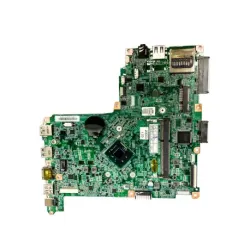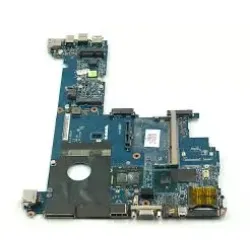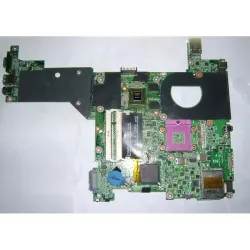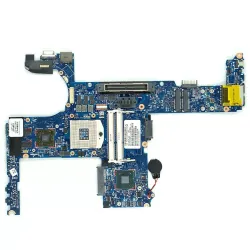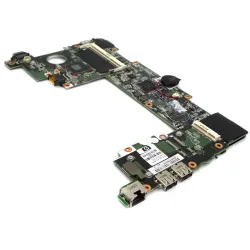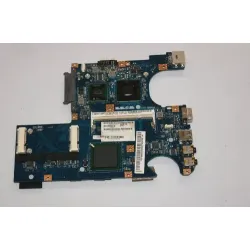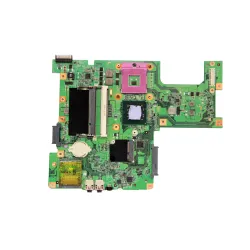Budget-Friendly MotherBoard For Laptops: HP, DELL, LENOVO, IBM, ACER, AND ASUS.
A laptop motherboard, also known as a system board, mainboard, or logic board, is the main circuit board that connects all the components of a laptop together, including the processor, memory, storage, graphics card, and other peripherals. It serves as the central nervous system of the laptop, facilitating communication between different parts of the computer and allowing it to function as a single unit. The motherboard also provides the necessary power and data connections for other components, such as the display, keyboard, and touchpad. It is typically located near the bottom of the laptop and can be accessed by removing the bottom panel of the device.
The features of Refurbished Laptop Motherboards
The form factor of Motherboards:
Laptop motherboards are designed to fit into specific laptop models and come in various sizes and shapes. The most common form factors for laptop motherboards are ATX, Micro-ATX, and Mini-ITX.
Chipset of Motherboards:
The chipset is a crucial component of the motherboard that facilitates communication between the CPU, memory, storage, and other peripherals. Different chipsets offer different features, such as support for specific CPUs, graphics cards, and memory types.
Processor socket of Motherboards:
The processor socket is the slot on the motherboard that houses the CPU. The socket type must match the CPU to ensure compatibility.
Memory slots of Motherboards:
The number and type of memory slots on a laptop motherboard determine the maximum amount and type of RAM that the laptop can support.
Laptop Motherboards Storage interfaces:
Laptop motherboards typically include multiple storage interfaces, such as SATA and M.2, to support different types of storage devices such as HDDs, SSDs, and NVMe drives.
Laptop Motherboards Peripheral interfaces:
The motherboard includes various interfaces for peripherals, such as USB, Ethernet, HDMI, and audio jacks, allowing the laptop to connect to external devices.
BIOS:
The BIOS is the firmware that controls the motherboard's basic operations, including booting up the system and managing the hardware components. Different motherboards offer different BIOS features, such as overclocking and power management options.
The power delivery of Motherboards:
The motherboard provides power to the laptop's components through the power connector, battery, and other power management features. The power delivery system must be compatible with the laptop's power requirements to ensure proper function and performance.
Laptop Motherboards Cost-effectiveness:
Refurbished motherboards are often less expensive than new ones, making them a more budget-friendly option for those looking to repair or upgrade their laptop.
Compatibility Refurbished Laptop Motherboards:
Refurbished motherboards are usually designed to be compatible with the specific laptop model they are intended for, ensuring proper fit and function.
Warranty of Laptop Motherboards:
Many refurbished motherboards come with a warranty or guarantee, providing peace of mind to the buyer in case any issues arise.
Quality assurance of Laptop Motherboards:
Before being sold, refurbished motherboards undergo rigorous testing to ensure they are functioning properly and meet industry standards.
Refurbished Laptop Motherboards are Environmentally friendly:
Refurbishing motherboards is a way to recycle and reuse electronic components, which can help reduce electronic waste and contribute to a more sustainable future.
Availability of Refurbished Laptop Motherboards:
Refurbished motherboards can be a good option for older laptop models that may no longer have new motherboards available on the market.
Turn off the computer and unplug all cables. Open the computer case and locate the motherboard. Remove any screws or fasteners holding the motherboard in place. Disconnect all cables and connectors attached to the motherboard, including the power supply, data cables, and front panel connectors. Carefully lift the motherboard out of the case. Install the new motherboard in the same location and orientation as the old one.
Check the documentation that came with your computer. The motherboard model number may be listed in the user manual or specifications sheet. Look for a label on the motherboard itself. The model number is often printed on a label on the surface of the motherboard.
Check for physical damage, Test the power supply, Test the RAM, Test the hard drive, Test the CPU, Test with an external display.
The lifespan of an Asus motherboard can vary depending on factors such as usage, environment, and maintenance. Asus motherboards are designed and tested to withstand years of use, and they typically come with a warranty period of 3 to 5 years.

